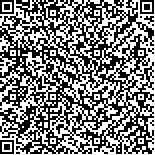王硕硕,黎蒙,倪卫东,等.“六字诀”不同训练方式对脑卒中恢复早期患者呼吸肌功能的影响[J].中华物理医学与康复杂志,2024,46(3):210-215
扫码阅读全文

|
| “六字诀”不同训练方式对脑卒中恢复早期患者呼吸肌功能的影响 |
|
| |
| DOI:10.3760/cma.j.issn.0254-1424.2024.03.004 |
| 中文关键词: 脑卒中 呼吸肌功能 “六字诀”呼吸训练 |
| 英文关键词: Stroke Respiratory muscles Six-character qigong Breathing training |
| 基金项目:2020-2021年度上海市卫生健康委员会中医药科研项目(2020LZ005);2023年徐汇区医学重点学科项目(SHXHZDXK202301) |
|
| 摘要点击次数: 4467 |
| 全文下载次数: 4135 |
| 中文摘要: |
| 目的 观察“六字诀”不同训练方式对脑卒中恢复早期患者呼吸肌功能的影响。 方法 采用随机数字表法将66例脑卒中恢复早期患者分成对照组、改良训练组和训练组,每组22例。3组患者均给予常规康复训练,对照组患者在此基础上辅以传统呼吸训练,改良训练组、训练组则分别给予改良“六字诀”呼吸训练、古法“六字诀”呼吸训练,3组患者均连续治疗2周。于治疗前、治疗2周后及治疗结束1个月后分别对3组患者进行疗效评定,其中呼吸肌功能指标包括最大吸气压(MIP)、最大呼气压(MEP);肺通气功能指标包括第一秒用力呼气量(FEV1)、用力肺活量(FVC)、呼气峰值流速(PEF)、最大呼气中段流量(MMEF)、吸气峰值流速(PIF);膈肌运动幅度指标包括平静吸气位时及最大吸气位时膈肌移动度。 结果 治疗2周后及治疗结束1个月后3组患者MIP、MEP及各项肺通气功能指标均明显提高,并且改良训练组MIP、MEP及各项肺通气指标在上述时间点的改善幅度均显著优于训练组和对照组。治疗2周后及治疗结束1个月后改良训练组患者在平静吸气位和最大吸气位时其膈肌移动度均显著增加,并且改良训练组膈肌移动度在上述时间点的改善幅度亦显著优于训练组及对照组。 结论 相较于古法“六字诀”呼吸训练及传统呼吸训练,改良“六字诀”呼吸训练能更有效改善脑卒中恢复早期患者的呼吸肌功能、肺通气功能及膈肌移动度,并且在治疗结束1个月后随访时其疗效仍较显著。 |
| 英文摘要: |
| Objective To explore the impact of different six-character qigong training modes on respiratory muscle function early after a stroke. Methods Sixty-six stroke survivors in the early stage of recovery were randomly divided into a control group, a modified training group, and an ancient training group, each of 22. In addition to routine rehabilitation training, the control group received conventional respiratory training. The modified training and ancient training groups were trained in modified six-character qigong or ancient six-character qigong, respectively, for two weeks. Before the treatment, after the two weeks and one month later, maximum inspiratory pressure (MIP) and maximum expiratory pressure (MEP), forced expiratory volume in one second, forced vital capacity, peak expiratory flow, maximum mid-expiratory flow, and peak inspiratory flow were measured. Diaphragm mobility during quiet inspiration and maximum inspiration were also quantified. Results After 2 weeks of treatment and at 1 and 3 months after the end of the treatment, all three groups showed significant improvement in MIP, MEP and the pulmonary ventilation indicators, but the average improvement in the modified training group was significantly greater than in the other two groups. Their average diaphragm mobility was also significantly greater. Conclusion Modified six-character qigong respiratory training is more effective than its ancient counterpart in improving respiratory muscle function, pulmonary ventilation, and diaphragm mobility early after a stroke, with effects which persist for at least one month. |
|
查看全文
查看/发表评论 下载PDF阅读器 |
| 关闭 |
|
|
|